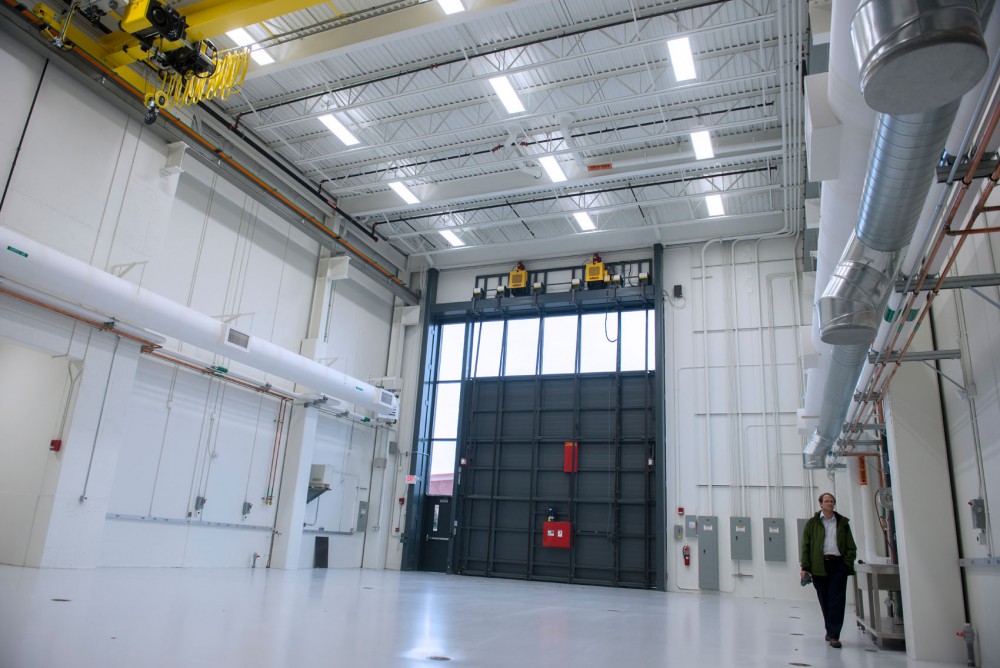University of Minnesota researchers are beginning to move in to the newly finished Physics and Nanotechnology Building.
Faculty and staff are moving their offices and lab equipment into the new space, nested between the Scholars Walk and engineering buildings, but the grand opening isn’t scheduled until April 2014.
In 2011, the state Legislature approved $51.3 million in bonding funds for the $83 million project.
Physics and astronomy head Ron Poling said the building will staff about 27 professors and 125 graduate students, postdoctoral researchers and staff
members.
“Research groups will be closer together [in the building],” physics and astronomy professor Paul Crowell said. “Although the building doesn’t have classrooms, it does have seminar and meeting rooms, which we don’t have in [Tate Laboratory].”
The new building was designed to make research easier for scientists in physics and nanotechnology fields, which include research on everything from computer chips to pharmaceutical drugs.
The building features a cleanroom, which is a controlled environment that has a low level of pollutants like dust, said Minnesota Nano Center Director Stephen Campbell.
The new cleanroom was necessary, Campbell said, because researchers have outgrown the current one, which is located in the corner of Keller Hall’s basement.
Since it opened in 1990, the Minnesota Nano Center has grown to more than 330 users, including 100 researchers from other universities.
The additional cleanroom will help researchers use the space more efficiently, Campbell said, since they’ve outgrown their current lab. Having two cleanrooms will also provide backup equipment.
In the new building, the cleanroom is located next to the scientist’s laboratories, which helps scientists work more easily.
“Sometimes scientists need to make materials [outside of] the cleanroom and then bring them in and apply them,” Campbell said.
Associate professor Vincent Noireaux, whose research focuses on trying to synthesize artificial cells, said the building’s organization and extra space will help make his research more efficient.
Associate professor of experimental physics and astronomy Vuk Mandic said the cleanroom is important for the next steps of his experiments, which focus on looking at germanium or silicon crystals in order to understand the universe.
Poling said the building’s 20-foot-tall laboratory is another benefit because it will allow enough space for researchers to design and build large experiments.
“In the NOvA project, we … weren’t able to do a lot of testing at [the] design stage of modules because there was no space big enough to do it,” he said.
The newer facility has other upgraded utilities like fume hoods and better network access, which will make the work environment better for research, Mandic said.
The physics and nanotechnology building’s new lab space will also help the University hire new researchers, Crowell said.
“Now when we hire new faculty members, they can participate with design,” Crowell said. “The laboratory space is there, and major utilities are in place. Hopefully [it will] help us in recruiting for the University.”


